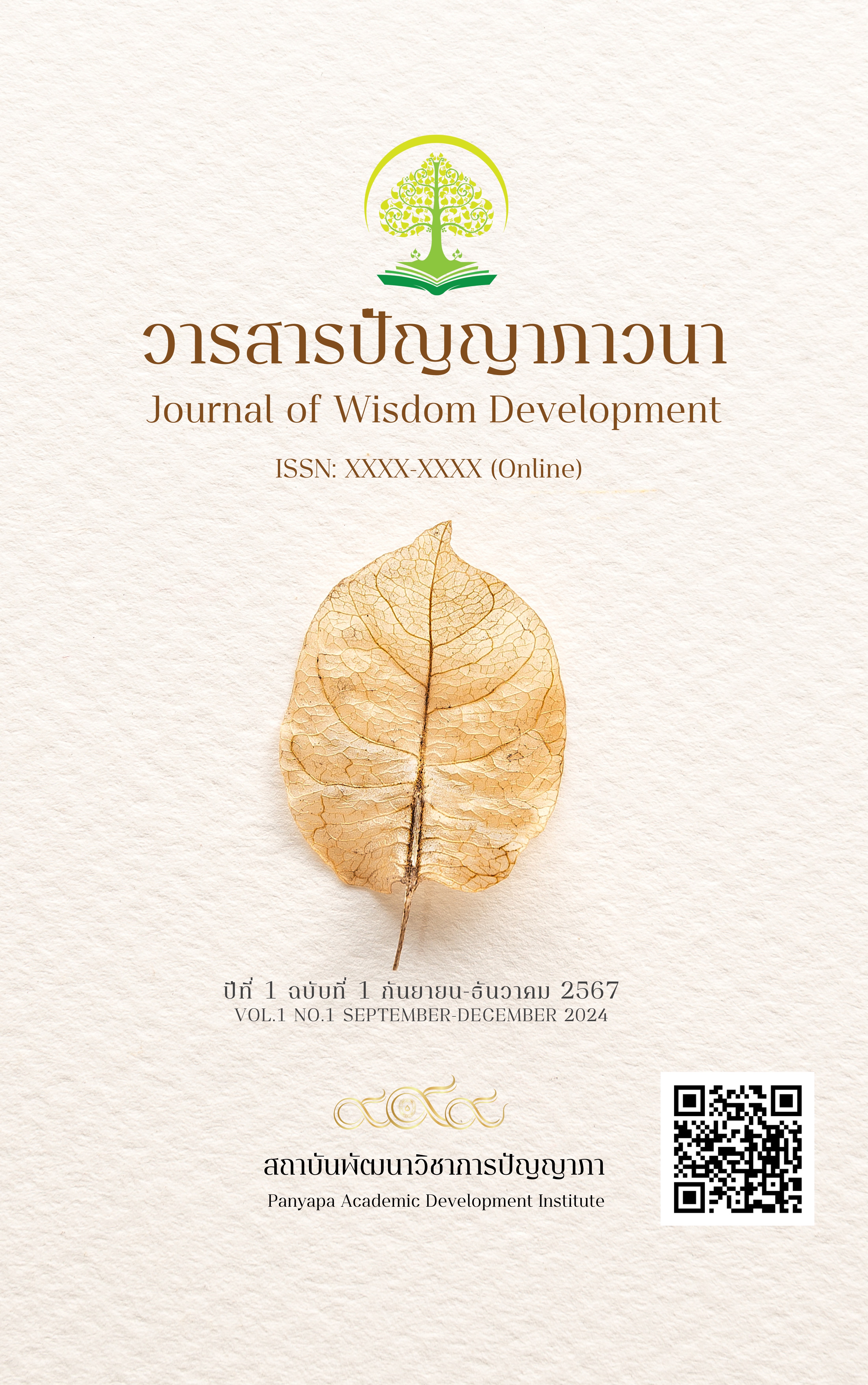The Development of Integrated learning Management with NATUR-E MODEL to Improve Environmental Responsibility in Pangmaphapittayasan School
Keywords:
Integrated Learning, Nature-E Model, Conscience and responsibility, EnvironmentAbstract
Environmental problems that humans are currently experiencing. These are all problems arising from the living activities of humans who lack awareness and responsibility towards the environment. Therefore, successfully solving environmental problems must begin with humans as the cause first. To solve this problem, research was conducted to develop integrated learning activities to Improve environmental responsibility with the NATUR-E MODEL and to study the results of applying integrated learning activities by using the NATUR-E MODEL to Improve the environmental responsibility of students at PangmaphaPittayasan School. The participants were 22 teachers and 322 students. The research instruments consisted of the Supervision Record Form, Environmental learning activity sheet recording form, and behavioral observation form for Unity doing activities. In data analysis, the content analysis approach was employed. The credibility was verified by data triangulation. The results of the research found that there were 6 steps of NATUR-E MODEL 1) Natural literacy preparing 2) Attitude building 3) Travel the problems and troubleshooting 4) Unity doing 5) Reaction assessing and 6) Empowering. In addition, the results of applying integrated learning activities using the NATUR-E MODEL found that Teachers and Students have environmental responsibility. Including determination and dedication to conservation. and maintain a livable environment and create a network of cooperation to benefit the community and society. Moreover, students have analytical thinking with an understanding of determining how to collect issues from events that occurred Including principles for summarizing the results of analysis and separating the information received. along with dealing with problems to suit the environment
References
กัญญา สมบูรณ์, เกตุมณี มากมี และบุญธิดา เทวาพิทักษ์. (2566). การวิจัยเพื่อพัฒนา TEAK MODEL เป็นกระบวนการขับเคลื่อนชุมชนแห่งการเรียนรู้ทางวิชาชีพ (PLC) ของโรงเรียนปางมะผ้าพิทยาสรรพ์. วารสารสมาคมพัฒนาวิชาชีพการบริหารการศึกษาแห่งประเทศไทย, 5(4), 26-43.
กรมส่งเสริมคุณภาพสิ่งแวดล้อม. (2559). คู่มือแนวทางดําเนินงานโรงเรียน Eco-school (ออนไลน์). (อ้างเมื่อ 25 ตุลาคม 2566). จาก https://www.deqp.go.th/media/36332/eco-schooththaiguide.pdf
ชรินทร์ มั่งคั่ง. (2561). การถ่ายทอดองค์ความรู้ศาสตร์พระราชาของครูศูนย์การเรียนรู้ชุมชนเพื่อส่งเสริมความเป็นพลเมืองวิถีเขียวของผู้เรียนในพื้นที่โครงการหลวงภาคเหนือของไทย. Veridian E-Journal, Silpakorn University, 11(1), 1503-1521.
ฐากร สิทธิโชค. (2559). การจัดกระบวนการสิ่งแวดล้อมศึกษาในสถานศึกษา. วารสารมนุษยศาสตร์สังคมศาสตร์ มหาวิทยาลัยทักษิณ, 11(3), ฉบับพิเศษ.
ปรีชา สภาสุวรรณกุล, สุนทร โคตรบรรเทา และจันทร์เพ็ญ ชุมแสง (2554). การพัฒนารูปแบบนำร่องหลักสูตรสิ่งแวดล้อมศึกษา สำหรับโรงเรียนประถมศึกษาสำนักงานเขตพื้นที่การศึกษาชัยภูมิ เขต 1. วารสารวิจัย มข, 11(3), 81-90.
พิชญา ปิยจันทร์. (2560). สิ่งแวดล้อมศึกษา: กระบวนการเรียนรู้ผ่านการลงมือทําอย่างเท่าเทียม. วารสารสิ่งแวดล้อมศึกษา, 21(3), 38-42.
วินัย วีระวัฒนานนท์. (2555). สิ่งแวดล้อมศึกษาในยุคโลกร้อน. พิษณุโลก: พิษณุโลกดอทคอม.
สมยศ วิเชียรนิตย์. (2557). การพัฒนารูปแบบกิจกรรมค่ายสิ่งแวดล้อมศึกษาเพื่อการอนุรักษ์และฟื้นฟูทรัพยากรป่าไม้ สำหรับเยาวชนในจังหวัดกาฬสินธ์. วิทยานิพนธ์ปรัชญาดุษฎีบัณฑิต สาขาวิชาสิ่งแวดล้อมศึกษา มหาวิทยาลัยมหาสารคาม.
สำนักงานจังหวัดแม่ฮ่องสอน. (2563). สภาพพื้นที่จังหวัดแม่ฮ่องสอน. ค้นเมื่อ 15 พฤษภาคม 2565, จาก http://www.maehongson.go.th/th/province-info/general-info/location.html.
สำนักงานนโยบายและแผนทรัพยากรธรรมชาติและสิ่งแวดล้อม. (2556). รายงานสถานการณ์คุณภาพสิ่งแวดล้อม พ.ศ.2556. กรุงเทพฯ: สำนักนโยบายและแผนทรัพยากรธรรมชาติและสิ่งแวดล้อม.
Meaghan Guckian. (2017). Beyond Green Consumerism: Uncovering the Motivations of Green Citizenship. Retrieved February 20 2021, from:https://quod.lib.umich.edu/m/mjs/12333712.0005.105?view=text;rgn=main.






